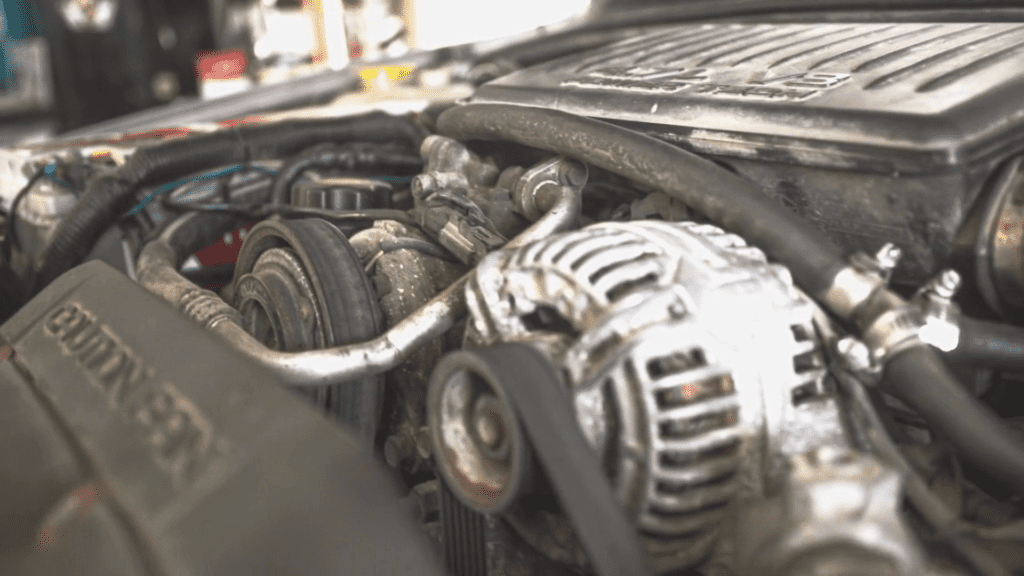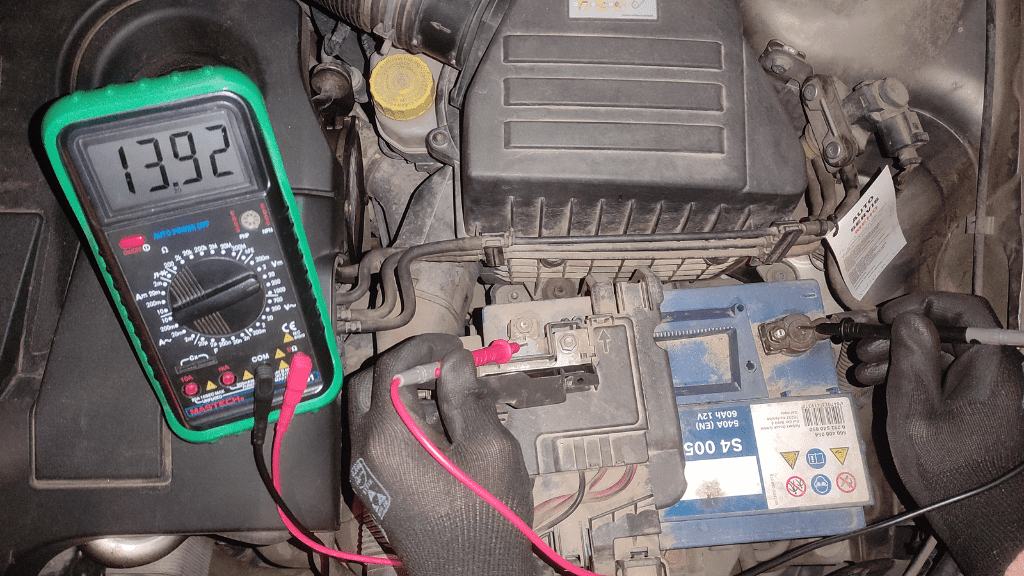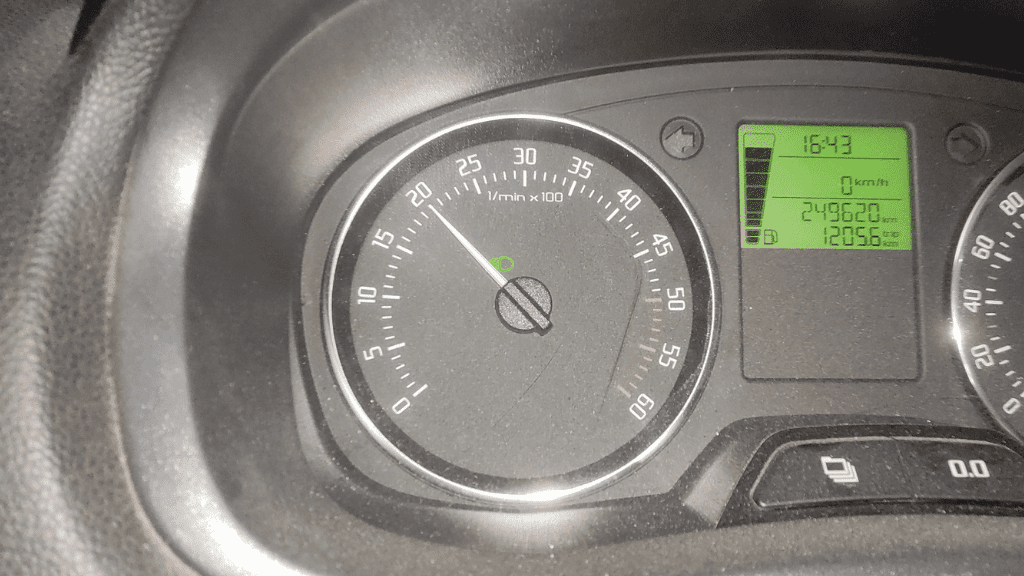
How to Test an Alternator with a Multimeter (Step by Step)
Content
- Signs of a Failing Alternator
- Tools needed to test the generator
- How to test an alternator with a multimeter
- Checking the generator through an ammeter
- Check the rumor generator
- Diagnostics of the generator via radio
- Testing by disconnecting the battery cable (don't try)
- Alternator replacement
- Conclusion
- F.A.Q.
The alternator or alternator is an important part of any automotive internal combustion system. This helps generate enough current to charge the car battery and power other car accessories when the car is on.
There are many signs that will help you notice that the alternator in your car may be faulty. However, in order to be more accurate in your diagnosis, our guide offers you several methods of proper testing from the comfort of your home.
Let's get started.

Signs of a Failing Alternator
Unlike some other problems with your car that are difficult to pinpoint, the symptoms of a bad alternator will help you easily identify the problem. These symptoms include
- Dim or too bright headlights caused by unstable alternator operation. You may also notice flickering headlights.
- Other faulty accessories such as slow closing windows or loss of radio power. This is due to the fact that they do not receive the required amount of electricity.
- An often-depleted battery caused by the alternator not charging it when the vehicle is running.
- Difficulty starting the car or clicking sounds when trying to start it.
- The car stalls.
- The smell of burnt rubber, which may indicate friction or wear on the alternator drive belt.
- Battery indicator light on dashboard
When you watch several of them at the same time, you know that your alternator needs to be checked.

Tools needed to test the generator
To run the tests you will need:
- Multimeter
- good car battery
- Functioning car accessories
A multimeter is the best tool for getting accurate results when diagnosing the alternator and other electrical parts of the vehicle.
How to test an alternator with a multimeter
With the vehicle off, set the multimeter to the 20 volt DC range and place the test leads on the negative and positive battery terminals as appropriate. Record the value presented to you by the multimeter, then turn on the car. If the value remains the same or decreases, the alternator is faulty.
We still have a lot to learn about this testing process, and we will delve into it. By the way, this is the easiest way to test the generator with a multimeter.
- Check battery voltage with engine off
To start the car, it is necessary that the battery is properly charged and in optimal condition.
If it's not working at the right voltage, your alternator isn't doing its job and you may have found out what the problem is with your car. This is more common with older batteries or batteries that have been used in very cold environments.
The battery check is also important for comparing the last parts of our tests.
Turn off the car. Set the multimeter to the 20 volt DC range for accuracy, connect the red positive test lead to the positive battery terminal and the black negative test lead to the negative terminal. Note that if your vehicle only has a positive terminal, you can place your black test lead on any metal surface that will act as a ground.
Now you expect to see a multimeter reading of 12.2 to 12.6 volts. If you don't get readings in this range, your battery may be the problem and should either be charged or replaced.
However, if you get values between 12.2V and 12.6V, it's in good condition and you can move on to the next step.

- Inspect the wiring
The charging system may not perform optimally due to damaged wires or loose connections. Perform a visual inspection to rule out this possibility before proceeding to the next step.

- Start the engine
Now you continue to start the car and increase the speed so that the charging system works at full speed. To do this, you accelerate the car to 2000 rpm. At this point, the alternator and vehicle charging system should be running at a higher voltage.

- Take protective measures
The next steps are related to electricity. To reduce the risk of electric shock, wear protective equipment such as rubber gloves, do not touch the wires or terminals, and never disconnect the battery cables from the terminals.

- Checking battery voltage with engine running
With the car still running, proceed to test the battery with a multimeter. Place the red wire on the positive terminal and place the black wire on the negative terminal.

- Evaluate the change in voltage readings
Here you are checking for an increase in the volt value. Optimally, a good alternator has a higher value between 13 volts and 14.5 volts. Sometimes it reaches 16.5 volts, which is the maximum allowable value.

If the voltage stays the same or drops from the value you previously recorded when the vehicle was turned off, the alternator could be damaged. You need to replace it at this point.
To make sure the test is complete enough, turn on car accessories such as radios and headlights and see how the multimeter readings react. If the volts remain above 13 volts when the vehicle accelerates to 2000 rpm, the charging system is in good condition.
There are other ways to make sure your generator is in good condition. Some are easier than others.
Checking the generator through an ammeter
An ammeter is an electrical instrument used to measure direct (DC) or alternating (AC) current used by other devices.
When used in a vehicle with a generator, the ammeter measures the current supplied to the battery through the charging system. This is one of the sensors located on the dashboard of your car.
The ammeter shows high current when the car is running and charging is in progress. Since the alternator is the main component of the recharging system, a malfunction here is a sign of a problem with the alternator.
Note that the ammeter may also show low current even if the alternator is working properly. This is when the battery is fully charged and the car accessories do not consume much power.
However, it is important here that the ammeter reading be higher when the machine is on than when it is off. If the ammeter reading does not increase, the alternator or charging system is faulty and the components should be replaced.
Check the rumor generator
One of the easiest methods you can use to diagnose your alternator failure is to listen carefully for strange sounds coming from the car. The alternator makes a high-pitched squealing sound as it wears out.
With the car running, listen for a squeal coming from the front of the car. If you notice a sound that gets louder when you turn on car accessories such as the air conditioner and radio at the same time, the alternator has failed and should be replaced.
Diagnostics of the generator via radio
Your car's radio can also tell you if there is a problem with the alternator or not. Although this diagnostic procedure is not entirely reliable.
Turn on your car radio and tune it to a low frequency AM station with no sound playing. If the radio makes a fuzzy sound when you rev it up, this is a sign that the alternator is bad.
Testing by disconnecting the battery cable (don't try)
One common way to test the alternator is to disconnect the cable from the negative terminal while the vehicle is running. The vehicle is expected to continue running due to sufficient voltage from a healthy alternator. He dies if the generator is out of order.
However, you don't try this. Disconnecting the cable while the vehicle is running is dangerous and can damage a working alternator. burn or damage voltage regulator and other electrical components.
After you have determined that the generator is faulty, proceed to replace it.
Alternator replacement
With the vehicle off, disconnect the negative battery cable, loosen the belt tensioner, remove the V-ribbed belt and disconnect all wires. After replacing the alternator with a new one, reconnect the wires and correctly install the V-ribbed belt in place.
Please note that the new alternator must have the same specifications as the old one used in your vehicle. This ensures compatibility.
Conclusion
Testing the generator with a multimeter is the most complex and accurate method described here. All you need to do is check the battery voltage when the car is off and check when it is on to determine changes in performance. All this you do without leaving your home. We hope you now understand how to test the generator with a multimeter.
F.A.Q.
Is it possible to check the alternator without removing it?
Yes, you can test the alternator without removing it. You either use a multimeter to check the battery, or listen for the squeal of an engine, or check for fuzzy sound from your radio.
At what voltage should the generator be tested?
A good alternator should be tested between 13 and 16.5 volts with the vehicle running. At least the voltage should be higher than when the engine is off.
How to check if the generator is faulty?
Set the multimeter to measure DC voltage and check the battery before and after starting the engine. A drop in voltage is a sign that the alternator is bad, while a rise in voltage means it is good.

